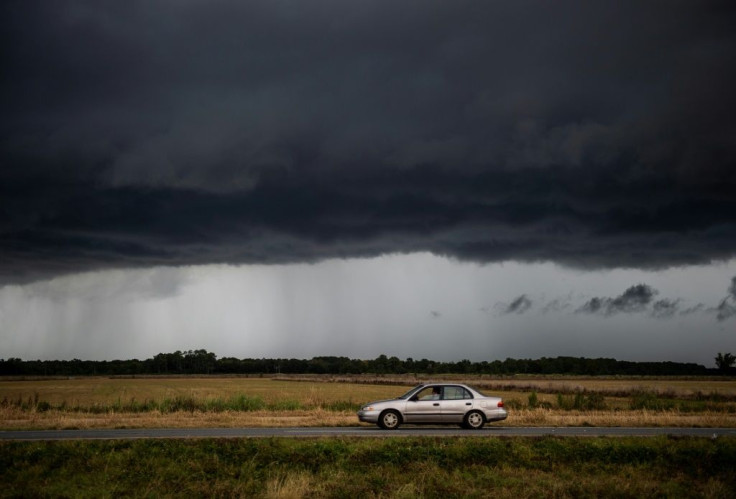Laura Downgraded To Tropical Storm, Continues Push Through Louisiana
KEY POINTS
- The National Hurricane Center downgraded Laura to a tropical storm as it begins shifting eastward
- Over 700,000 customers in Louisiana were without power and at least one death has been reported
- Louisiana police and emergency responders were trying to control a leak at a chemical plant and surrounding residents have been ordered to stay inside
The National Hurricane Center downgraded Laura from a Category 1 hurricane to a tropical storm as it continued marching further inland across Louisiana.
As of 1:45 p.m. Thursday, Laura was about 50 miles southeast of Shreveport, Louisiana, with sustained winds averaging 70 mph. It was moving north-northeast at 16 mph.
The Gulf Coast areas of eastern Texas and Louisiana were among the hardest areas hit as the initial storm surge caused widespread flooding. Reports said winds well over 100 mph had pulled up trees, ripped up roofing, and blew out windows in various structures.
At least one death has been reported thus far after a tree collapsed on a home in Leesville, Louisiana, and killed a 14-year-old girl.
Over 700,000 customers were without power.
Louisiana State Police said its most pressing concern was a chlorine leak at a chemical plant in Lake Charles, Louisiana.
Police said it was first called about a chemical fire at the BioLab chemical manufacturing plant after the eye of then-Hurricane Laura passed over Lake Charles. Chemical clouds formed over the surrounding area due to the fire, prompting Louisiana Gov. John Bel Edwards to order anyone in the area to shelter-in-place until the fire was under control. This included closing all windows and doors and turning off air conditioners until authorities deemed it safe.
The fire has mostly been contained, but authorities are trying to limit the potential damage the leak may cause.
Along with chlorine, BioLab produces trichloroisocyanuric acid and other chemicals used in pool and house cleaning products. However, both chemicals are potentially toxic to animals and humans depending on exposure.
Trichloroisocyanuric acid can cause general irritation to skin and eyes from physical exposure along with coughing or wheezing if inhaled through the nose or mouth. Chlorine, which was used as a chemical weapon in World War I, can appear as a green-yellow cloud when burned and causes similar irritation to trichloroisocyanuric acid.
More flooding is expected in the Midwest and Mid-Atlantic as Laura shifts eastward heading into the weekend.
“Widespread flash flooding along small streams, urban areas, and roadways will continue across portions of Louisiana, Mississippi, and Arkansas,” the National Hurricane Center said. “Additional rainfall will also lead to minor to moderate freshwater river flooding. The heavy rainfall threat and flash and urban flooding potential will spread northeastward into the middle-Mississippi, lower Ohio and Tennessee Valleys, and Mid-Atlantic States Friday and Saturday.”

© Copyright IBTimes 2024. All rights reserved.





















